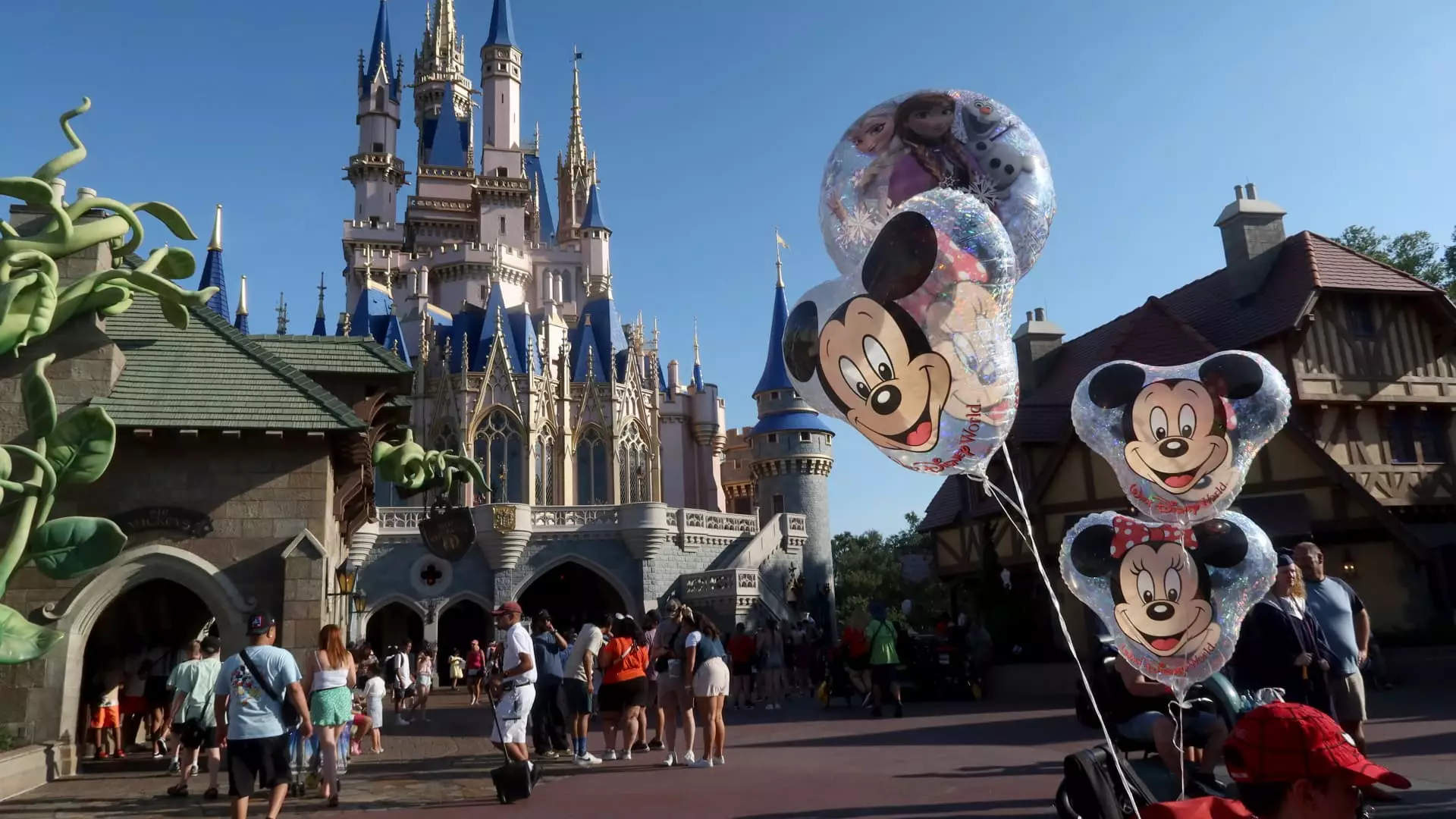As Disney approaches its fiscal first-quarter earnings report due on Wednesday, the scrutiny from Wall Street intensifies. With a focus on indicators from its streaming and theme park sectors, analysts are keen to decipher the underlying trends that will reflect the company’s overall health. Expectations are set for earnings per share (EPS) of approximately $1.45 and an impressive revenue projection of $24.62 billion, as gathered from recent polls by LSEG. Such figures highlight a resilient performance despite prevailing market challenges.
A critical area of focus for investors is Disney’s streaming business, which has become increasingly competitive as giants like Netflix reported significant growth in subscribers. Netflix recently shattered records by crossing the 300 million mark, contributing an astounding 19 million new subscribers in just one quarter. In contrast, Disney must convey its own subscriber growth during this earnings call, especially given the heightened expectations set by its competitors.
The challenge for Disney lies not just in acquiring new subscribers but also in achieving sustainable profitability. In recent quarters, the company has implemented strategies such as introducing ad-supported subscription tiers and enforcing stricter measures against password sharing to enhance revenue streams. These moves are essential components of a broader strategy designed to align Disney’s offerings with consumer preferences while appeasing investors hungry for a lucrative return amid heightened competition in the streaming domain.
While the streaming sector garners immediate attention, Disney’s theme park operations stand as a promising beacon of growth, especially post-pandemic. As tourism rebounds and consumer confidence strengthens, the theme parks have seen an uptick in attendance and spending. This performance has bolstered the company’s financials in recent quarters and provided something of a safety net against the uncertain future of its streaming services.
Disney’s investments in revamping and expanding its theme park experiences have proven beneficial, fostering record-breaking attendance numbers. However, the pressure remains for Disney to balance its investments and maintain profitability across both sectors.
Compounding these operational aspects is the anticipated change in leadership. Current CEO Bob Iger has pledged to step down by early 2026, and the company’s succession process has become a topic of interest. Concerns linger as investors seek clarity on who will take the reins after Iger, whose leadership has indelibly shaped Disney’s trajectory. With Iger at the forefront, the company has seen remarkable achievements, but his impending departure raises questions about the company’s future direction and stability.
As the company prepares for this earnings call, all eyes will be on how they navigate these multi-faceted concerns—from ensuring subscriber retention amidst stiff competition to preparing for a shift in leadership. Investors will undoubtedly seek reassurance that Disney remains poised for sustainable growth, regardless of the headwinds faced by its various segments.


Leave a Reply